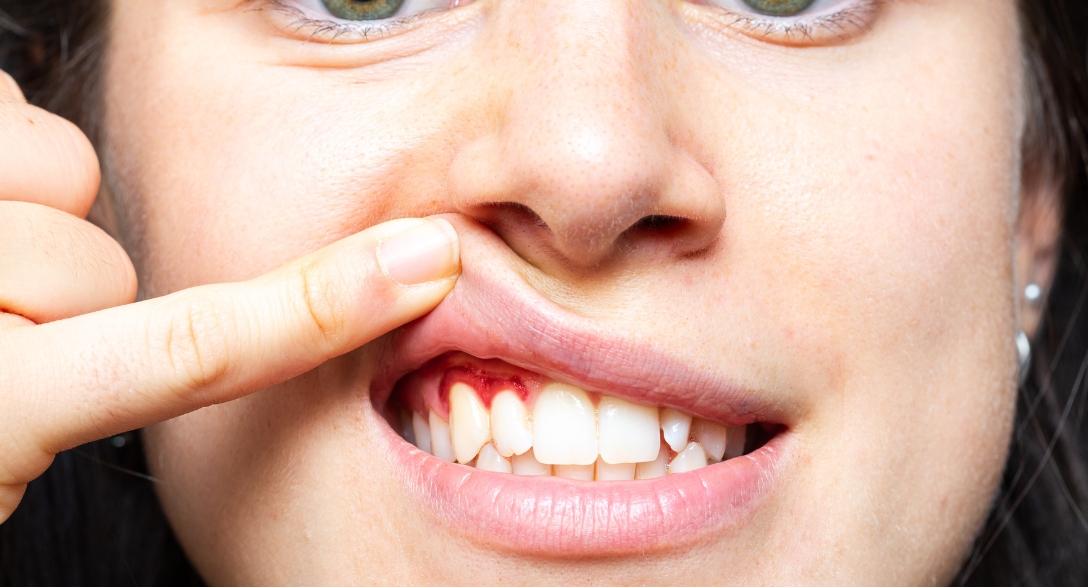Call Us Today 817-737-7668

Have you recently spotted blood in your brush? Or do you feel a twinge in your swollen gum? All these can be tell-tale signs of the early form of gum disease, a.k.a. Gingivitis. While many assume that it has the potential to go away on its own, the reality looks bleak. Years of research show that gingivitis can turn into a severe form of gum disease, a.k.a. Periodontitis. More than 45% of U.S. adults over 30 struggle with some form of gum disease. It’s often the result of ignoring the first signs of gum disease.
As the gum disease starts quietly, you are at great risk of missing the signs of it. The best move you can make for your oral health is contacting a dentist when you notice bleeding while brushing, mild tenderness, or red gums. The good news is that gingivitis is reversible when you waste no time in treating it early. The right dental care and dental support can make a world of difference.
What Causes Gingivitis?
You now know how gingivitis looks, but what is its role in turning you into a patient of a more serious gum disease? Lack of a strong oral hygiene routine leads to a thick buildup of layers of plaque. It is a layer of bacteria that forms on your teeth every day. When you compromise with cleaning it off near the gumline and in the interdental space, it turns into tartar. Tartar traps more bacteria and irritates your gums.
Apart from poor brushing or flossing habits, other common causes include:
- Smoking or using tobacco
- Dry mouth
- Hormonal changes (like pregnancy or menopause)
- Anticonvulsants, Amlodipine, immunosuppressants
- Health conditions like diabetes
Gingivitis Symptoms You Shouldn’t Ignore
While it might seem gum diseases always come with a list of non-negligible signs, it’s far from the truth. People have reported gingivitis that doesn’t hurt. So, it’s easy to miss it. Pay attention to these signs:
- Red or swollen gums
- Bleeding gums during brushing or flossing
- Bad breath
- Receding gums or teeth
- Tender gum
How to Treat Gingivitis Effectively
Advanced periodontal disease treatment is the best way to rebuild your smile in Fort Worth, TX. Whether you’re at the early stage of gum disease or it has taken the form of periodontitis, only professional care can help you reverse it. However, you can prevent plaque and tartar buildup and stop bacteria from irritating the gums through an at-home oral care routine like:
- Brush twice a day with a soft-bristled toothbrush
- Floss daily
- Use an antimicrobial mouthwash twice a day after brushing
- Avoid sugary snacks and drinks that fuel plaque
Your Long-Term Gum Health Starts Now
Once you restore your gum health, the focus shifts to keeping it that way. That means:
- Staying consistent with brushing and flossing
- Scheduling check-ups twice a year
- Listening to your mouth—don’t ignore bleeding or soreness
Living a life with sore, bleeding gums is painful. It hinders you from participating in the joys of life and appreciating little moments. The earlier you start treating gingivitis, the easier it is to get rid of the nagging gum pain. Brush well, clean between your teeth, and see your dentist regularly. It’s a small effort that can go a long way in keeping your health fit and enviable.


